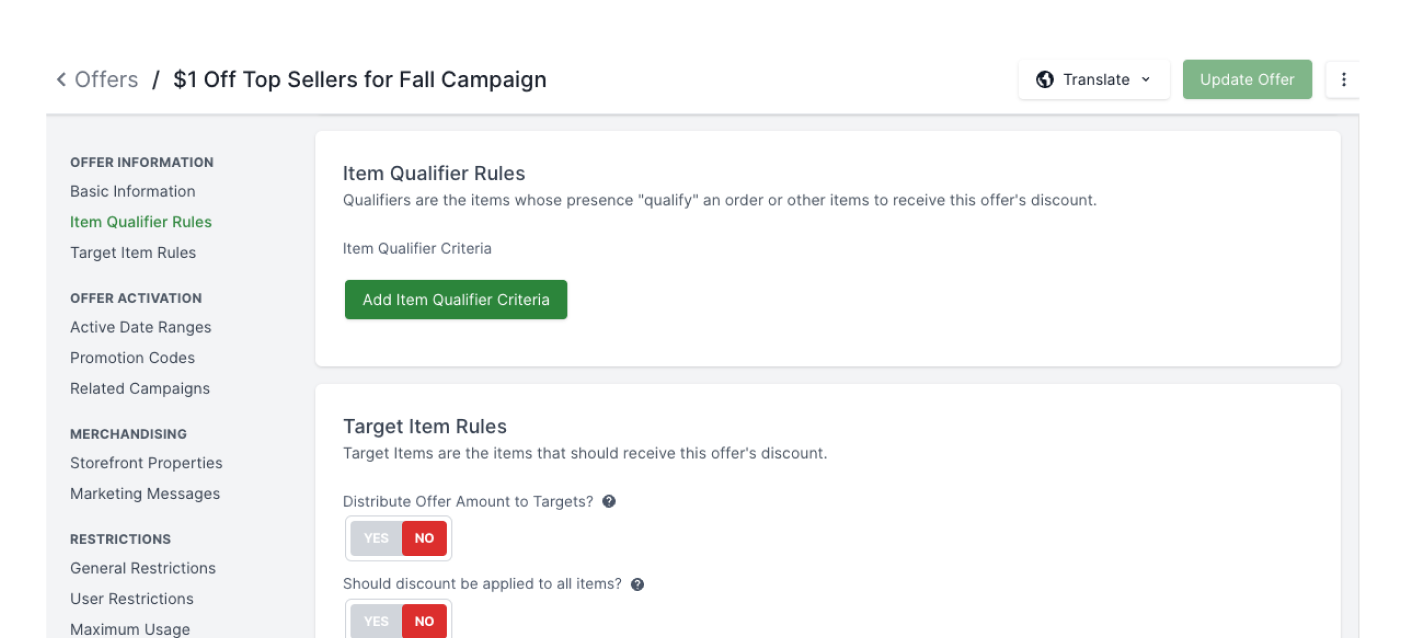Seven Rooms in the eCommerce Haunted House
Written by
Cassandra Gaston
Published on
Oct 23, 2025
It's Halloween, which means it's time to talk about what actually scares people who run large-scale ecommerce operations.
Not ghosts. Not goblins. Not even the prospect of another all-hands Q4 war room.
The real terrors are the rooms in your digital commerce house that everyone knows exist but nobody wants to open the door and actually deal with. Problems too big, too expensive, or too politically fraught to address until they become emergencies.
Consider this your haunted house tour. Seven rooms that exist in nearly every enterprise commerce operation at scale. You've probably walked past a few of them today.
You're running on a platform decision someone made in 2015. Maybe it was you. It made perfect sense at the time. The vendor had market share. The demos were impressive. The references checked out.
Now it's 2025 and you're watching competitors launch features in weeks that would take you quarters to implement, if your platform can support them at all. Your roadmap is controlled by a vendor release schedule. Your innovation velocity is governed by what's in their next major version.
The technical debt isn't measured in developer hours anymore. It's measured in millions of dollars of foregone revenue from capabilities you simply can't offer. Conversational commerce? Not on the roadmap. Headless flexibility? Requires a complete replatform. Real-time personalization across channels? Talk to your account manager about the enterprise-plus-plus tier.
You're trapped. Your board keeps asking why the DTC brand they invested in last quarter can do things your operation cannot. The switching costs are so high that staying put starts to look rational, quarter after quarter.
Room 2: The Omnichannel Integration Nightmare
Fifteen systems. Maybe twenty. A point-of-sale that doesn't talk to order management. Product information that lives in three places with three sources of truth. A CMS that knows nothing about inventory. Inventory management that knows nothing about customer data. Customer data that lives in a CDP that the merchandising team can't access without filing a ticket.
Everything is connected by middleware that was supposed to be temporary four years ago. The middleware has middleware now. Nobody knows what happens if you touch it.
The business wants to buy online and pick up in-store. They want to ship from the store. They want unified customer profiles. They want to know if someone browsing online is a VIP in your retail locations.
What they get is a Frankenstein's monster of point solutions, held together by exhausted developers and an architecture that made sense when you had four systems instead of twenty. This room used to be called "multichannel." Then "omnichannel." Now consultants call it "unified commerce." The terminology keeps changing. The problem doesn't. (Though to be fair, at least the consultants are making money.)
When someone uses the site-wide 20% off code, plus the email exclusive 25% off, plus their loyalty points, plus free shipping over $100, plus the seasonal promotion, and the products are already marked down from your MAP prices, what's your actual margin?
Suppose you can answer that in under five minutes, congratulations. You're in the minority.
Most enterprise commerce operations have promotional architectures so byzantine that nobody actually knows what the business is making on any given transaction. Finance has one view. The merchandising team has another. Marketing is optimizing for a third metric entirely. Getting them all aligned is nearly impossible.
Meanwhile, you've trained customers to never pay full price. They wait for sales. They stack codes. They abandon carts, knowing the inevitable 15% off email arrives six hours later.
You're not competing on product anymore. You're competing on who can discount the deepest while maintaining some semblance of profitability. It's a race to the bottom with Amazon and every other player in your category, and nobody knows how to stop running. The promotional calendar runs your merchandising strategy now, not the other way around. Every time you try to pull back, traffic drops. Every time you try to simplify, someone points to the revenue impact.
The discount dungeon keeps pulling you deeper, and at some point, you realize you're not sure there's a way back up.
Room 4: The Headless Promise Graveyard
The headless architecture pitch was compelling. Decouple the frontend from the backend. Be flexible. Launch faster. Build once, deploy everywhere.
Three years and five million dollars later, you have a frontend team that can't launch anything without backend changes, a backend team that can't prioritize frontend requests, and a release cycle that somehow got slower despite all the promises about agility.
The demos were great. The proof of concept worked. The vendor case studies were compelling. But production reality diverged sharply from the sales presentation.
Simple changes require coordinating across more systems. Your team maintains more infrastructure, not less. The "flexibility" you paid for comes with a complexity tax nobody mentioned in the sales process.
And you can't admit it's not working because you championed it. You presented it to the board. You sold the business on the vision. So now you're managing the gap between what was promised and what actually got delivered.
Room 5: The Personalization Theater
You have an AI-powered personalization platform. Seven figures. It was supposed to transform the customer experience.
What it actually does: shows best-sellers to everyone, with minor variations based on whether someone visited a category page. The "machine learning" is mostly business rules that your team configured two years ago. The "AI recommendations" perform marginally better than "customers also bought" in most A/B tests.
You're paying for Netflix-level personalization. Your board thinks you have Netflix-level personalization. Your marketing team tells customers you have Netflix-level personalization.
The reality is closer to Yahoo's homepage circa 2008. Same modules, same products, same promotions, with the thinnest veneer of customization that technically qualifies as "personalized" in your vendor's contract definition. Which is to say, not very personalized at all.
The emperor has no clothes, but the emperor signed a three-year contract with auto-renewal.
Room 6: The Peak Season War Room
It's October. Planning for November and December has already started. Not planning campaigns or merchandising strategies. Just survival.
Your infrastructure barely handled last year's peak. Traffic projections are up 20%. Your platform vendor says you're fine. Your DevOps team is significantly less optimistic. Finance doesn't want to hear about additional infrastructure costs.
So you do what you did last year. Assemble the war room. Cancel vacations. Run load tests that can't perfectly simulate Black Friday traffic patterns. Deploy a change freeze that makes everyone miserable. Watch dashboards obsessively. Keep engineers on call 24/7. Hope nothing breaks at 2 AM on Cyber Monday when you're trying to sleep with your phone on the nightstand, volume on high, that specific anxiety that comes from knowing a single Slack notification could mean disaster.
A site crash during peak season costs over $1M per hour. A single incident can define your year. A bad Black Friday can define your tenure.
This is no way to run a business. Innovation stops in Q4. Testing stops in Q4. The entire organization goes into preservation mode, hoping to make it through the most important quarter without catastrophic failure. Next year will be different, you tell yourself. But you know it won't be.
Eventually, you have to enter this room. The question isn't if. It's when, and under what circumstances.
Option A: You replatform proactively. Eighteen months of planning and execution. $2M+ budget. Board scrutiny. Organizational disruption. Career-defining risk. If it goes well, you're a hero for six months before everyone forgets. If it goes poorly, you're looking for a new job.
Option B: You don't replatform. The technical debt compounds. The competitive gap widens. Eventually, the platform becomes the bottleneck for everything the business wants to do. You're forced into a reactive replatforming under crisis conditions, with worse timing and higher stakes. This path also ends with you looking for a new job, just with a longer runway of misery first.
Both options carry substantial risk.
Staying costs more than leaving. Every quarter you delay, the gap widens. But leaving could cost everything if the implementation fails. The decision paralysis is rational, even as it becomes increasingly expensive.
Everyone in your position has stood in this room. Some have opened the door. Some are still deciding. None of them will tell you it was easy.
The Uncomfortable Truth
Nobody talks about this, but these seven rooms exist because you're successful.
The mid-market ecommerce company doesn't have a legacy platform problem. They're still on their first platform, optimistic and unburdened. They don't have integration nightmares because they're running on three systems, not twenty. Their promotional strategy fits on a whiteboard.
These rooms are what success at scale looks like from the inside.
Your legacy platform? It's a legacy platform because you've been around long enough for a good decision to become a constraint. The integration nightmare happened because you grew beyond what any single system could handle. Nobody starts with twenty systems. You get there by succeeding, expanding, acquiring, and evolving faster than your architecture can keep up.
The promotional architecture got byzantine because you went from "let's try a discount" to a sophisticated omnichannel strategy across segments, channels, and customer lifecycles. Simple promotional strategies are for simple businesses. You're not simple anymore.
You're in the personalization theater because you had the budget for enterprise software. The war room exists because you're doing volume that actually matters. The replatforming decision paralyzes because you have something substantial to lose.
Smaller companies look at you and see success. They want your problems. You look at yourself and see seven rooms you're afraid to enter.
Both perspectives are true.
The technical debt still compounds. The integration nightmares still slow you down. The promotional black hole still erodes margins. The problems are real and need solving. But if you're walking past these seven rooms, you've built something that matters.
The Doors Stay Closed
The specific manifestations vary, but the fundamental challenges show up everywhere. Every enterprise commerce operation has some version of these problems: legacy platforms that can't keep up, integration architectures held together with middleware and hope, promotional strategies that erode margins, vendors that overpromised and underdelivered, personalization that's more theater than substance, infrastructure that barely survives peak season, and platform decisions that nobody wants to make until they're forced to.
Pretending they don't exist is often the path of least resistance. Nobody wants to be the one to open the door and acknowledge the problem. Acknowledging it means someone has to own fixing it, which means budget battles, organizational disruption, and career risk.
So the doors stay closed. The problems compound. The technical debt accumulates. The competitive gap widens. Until eventually the choice is made for you at the worst possible time.
The best commerce leaders address these systematically before they become emergencies. Not all at once. Not without careful planning. But they stop walking past the doors and start opening them.
Which room are you avoiding?




